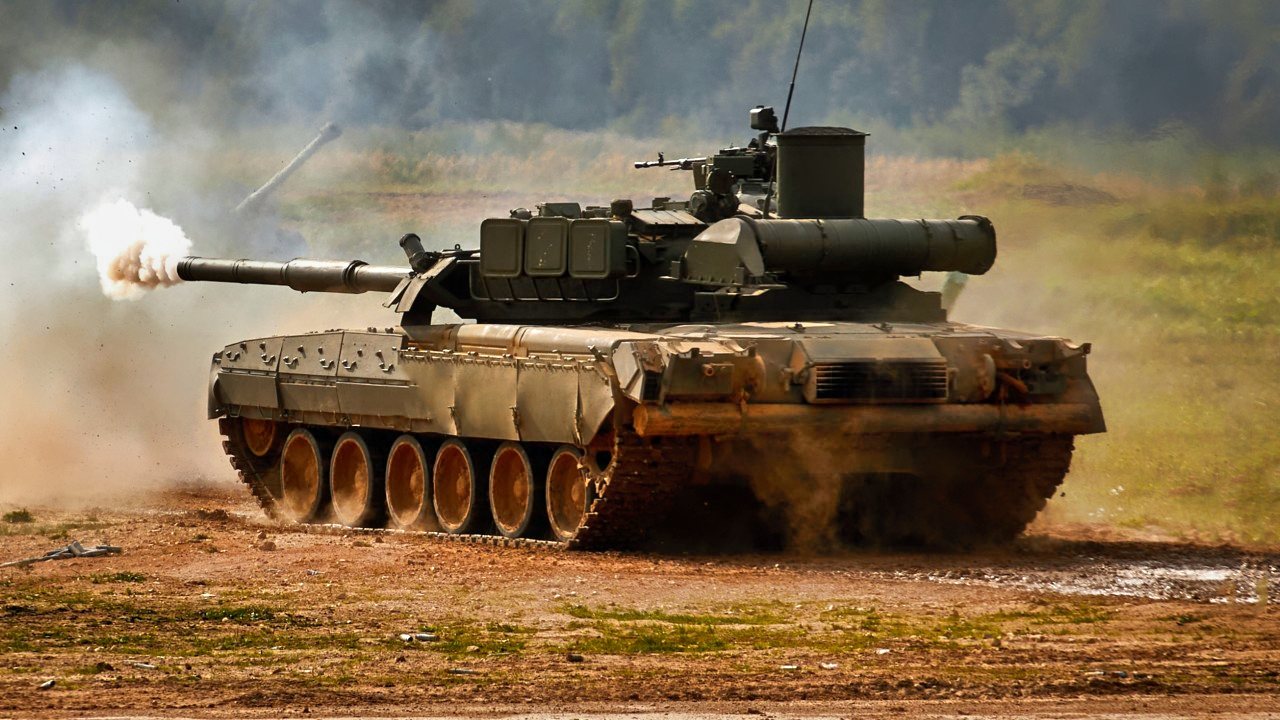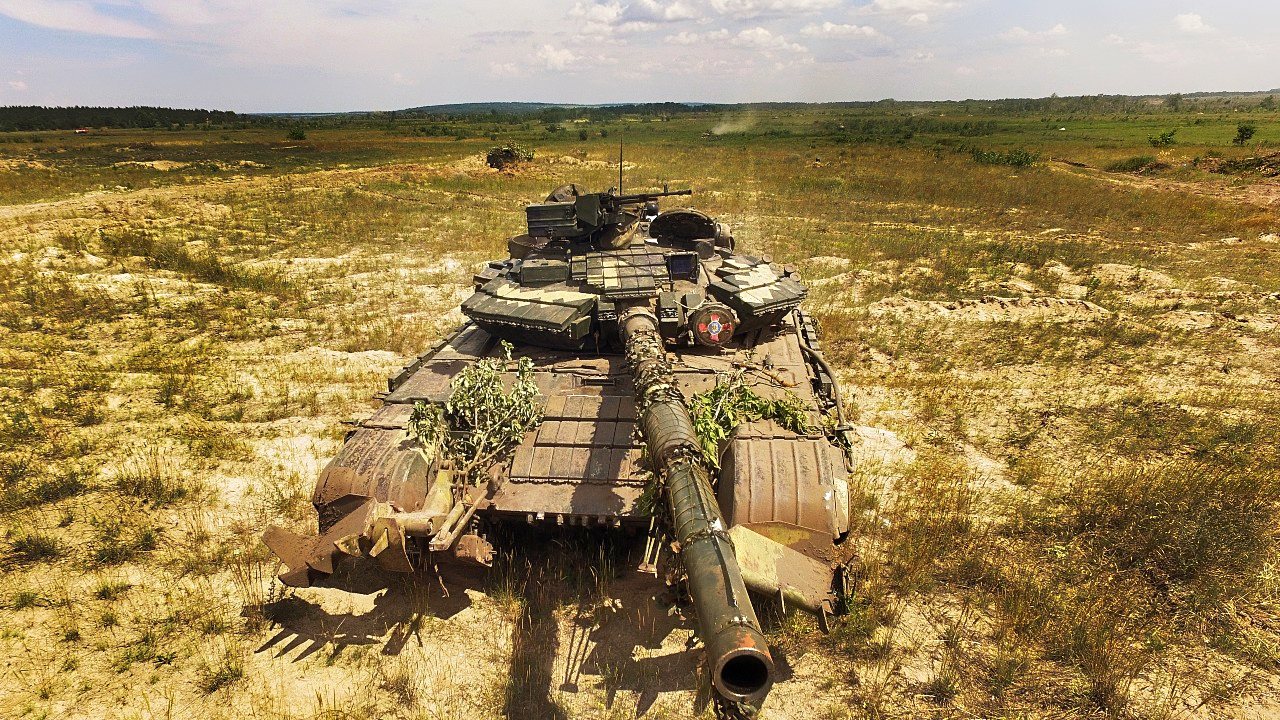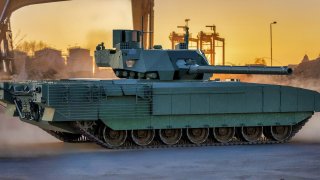Putin the Desperate: Russia Is Losing Tanks Now at an 'Unsustainable' Rate
As the Russo-Ukraine War enters its third year, Russia faces an unsustainable loss of tanks, forcing it to redeploy Cold War-era T-62 tanks with additional armor. However, the T-62's 620-horsepower engine struggles with the added weight, reducing its already poor mobility.
Summary and Key Points: As the Russo-Ukraine War enters its third year, Russia faces an unsustainable loss of tanks, forcing it to redeploy Cold War-era T-62 tanks with additional armor. However, the T-62's 620-horsepower engine struggles with the added weight, reducing its already poor mobility.

-The tank's low power-to-weight ratio and slow reverse speed hinder its effectiveness in hit-and-run tactics, making it vulnerable to Ukrainian artillery and missiles. Comparatively, Ukraine's modern M-1s and Leopard 2s, with better mobility and reverse speeds, have a tactical advantage.
-The reintroduction of the T-62 highlights Russia's difficulties in maintaining an effective armored force.
Russia's Tank Troubles: Cold War-Era T-62s Return to the Battlefield
As the Russo-Ukraine War moves deeper into year three, Russian President Vladimir Putin’s forces have lost thousands of tanks according to some analysis. The loss rate is unsustainable – it outpaces Russia’s ability to produce new tanks.
This means that to keep the frontlines properly outfitted, Russia has had to dip into its stockpiles of tanks. One result has been the reintroduction of the Cold War-era T-62 tank, albeit loaded with extra armor to compensate for the advances in defensive technology.

That compensation is necessary – the T-62 was introduced more than 60 years ago.
Dusting Off a Relic
Despite the additional armor and its added weight, “the Kremlin apparently isn’t uprating the T-62s 620-horsepower engines,” Forbes reported. That’s a problem because “a full suite of add-on explosive reactive armor [ERA] weighs as much as three tons. All that extra weight makes a sluggish T-62 even more sluggish.”
Consider that with the three tons of ERA, the T-62 likely weighs over 45 tons. So the 620 horsepower generated by the tank’s diesel engine gives a power-to-weight ratio of less than 14 horsepower per ton. That is paltry. By comparison, the Russian T-90M generates 26 horsepower per ton, while the American M-1A1 produces 22 horsepower per ton. The T-62’s 14 horsepower per ton means that the tank can hardly move.
Fortunately for the tank’s operators, “a well-fitted layer of explosive reactive armor, which explodes outward when struck in order to deflect an incoming blast, in essence, doubles a tank’s protection from certain kinds of high-explosive rounds.” Yet the addition of the armor, by slowing the tank down, increases the likelihood that the tank will need the armor. It’s a weird little cycle.
The T-62 was never heralded for its mobility. Now, it is even less mobile. That’s a problem in a conflict where both sides rely on tanks for small and flexible hit-and-run-style raids. “Examples abound of small teams of tanks from both sides speeding up to enemy positions, firing a few rounds then speeding away as enemy missiles and artillery dial in,” Forbes reported.
The T-62 is, of course, poorly equipped to engage in such hit-and-run tactics. The sluggish engine’s labors against the added weight of the ERA make darting in and out of engagements difficult, allowing Ukrainian missiles and artillery to respond before the tank has skirted to safety.
Meanwhile, Ukraine’s M-1s and Leopard 2s are at an advantage, able to dart in and out of these raids “because they have robust transmissions with fast reverse speeds,” meaning they “don’t have to spend tens of seconds turning around in order to escape a kill zone at high speed.”
Soviet-era tanks, by contrast, have notoriously sluggish reverse gears. The T-62, even operating without added ERA, may be able to reverse at just five miles per hour. Imagine darting out of a kill zone that slow. With the added armor, the reverse speed will be even slower. The M-1A1, meanwhile, can hit 25 mph in reverse.
The result will likely be further tank losses for Russia.
About the Author: Harrison Kass
Harrison Kass is a defense and national security writer with over 1,000 total pieces on issues involving global affairs. An attorney, pilot, guitarist, and minor pro hockey player, Harrison joined the US Air Force as a Pilot Trainee but was medically discharged. Harrison holds a BA from Lake Forest College, a JD from the University of Oregon, and an MA from New York University. Harrison listens to Dokken.
All images are Shutterstock.


